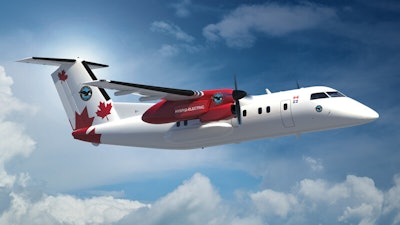
Pratt & Whitney Canada announced an advanced mobile charging unit (MCU) that can charge high-power batteries at up to 1,500 volts. The charger is compatible with megawatt charging system standards the aerospace industry is advancing for high voltage power applications.
Pratt & Whitney, an RTX business, developed the MCU in partnership with the National Research Council of Canada (NRC) and the Innovative Vehicle Institute (IVI) as part of the RTX hybrid-electric flight demonstrator project.
Pratt & Whitney and IVI developed the distributed control and protection strategy. The NRC worked on the hardware design, assembly, testing and delivery of two charger units.
The MCU is made from commercially available components and can deliver up to 280 kW and 1,500 volts.
Most Ready on IEN:
- Podcast: Hertz Trades EVs for Gas; Lockheed Busts Sonic Booms; Tesla Raises Factory Wages
- Now FAA Wants to Inspect Door Plugs on Older Boeing Jets
- Ask AI: What Is the Future of Smart Manufacturing?
- Archer Sets Testing Deal with NASA to Boost eVTOL Supply Chain
- Private U.S. Lander Destroyed During Reentry
The charger's bidirectional capability enables it to both charge and discharge batteries, which creates opportunities to recycle unused energy back into the electrical grid.
Pratt & Whitney Canada is still working on testing the propulsion system for the RTX hybrid-electric demonstrator. The experimental aircraft hopes to achieve a 30% improvement in fuel efficiency and reduced CO2 emissions compared to the most advanced regional turboprops.
In 2024, the propulsion system will be linked to batteries developed by H55 S.A., which will be charged using the new charger. H55 S.A. is a spin-off of Solar Impulse, which flew the first electric airplane around the world, propelled only by solar energy.
Last June, RTX's hybrid-electric flight demonstrator program successfully completed a rated power test of the demonstrator's 1 MW electric motor that was developed by Collins Aerospace. The 1 MW motor will be combined with a thermal engine developed by Pratt & Whitney as part of the hybrid-electric propulsion system.
Hybrid-electric propulsion is a key part of RTX's strategy for more sustainable aviation in support of the industry's goal of reaching net-zero CO2 emissions by 2050.





















